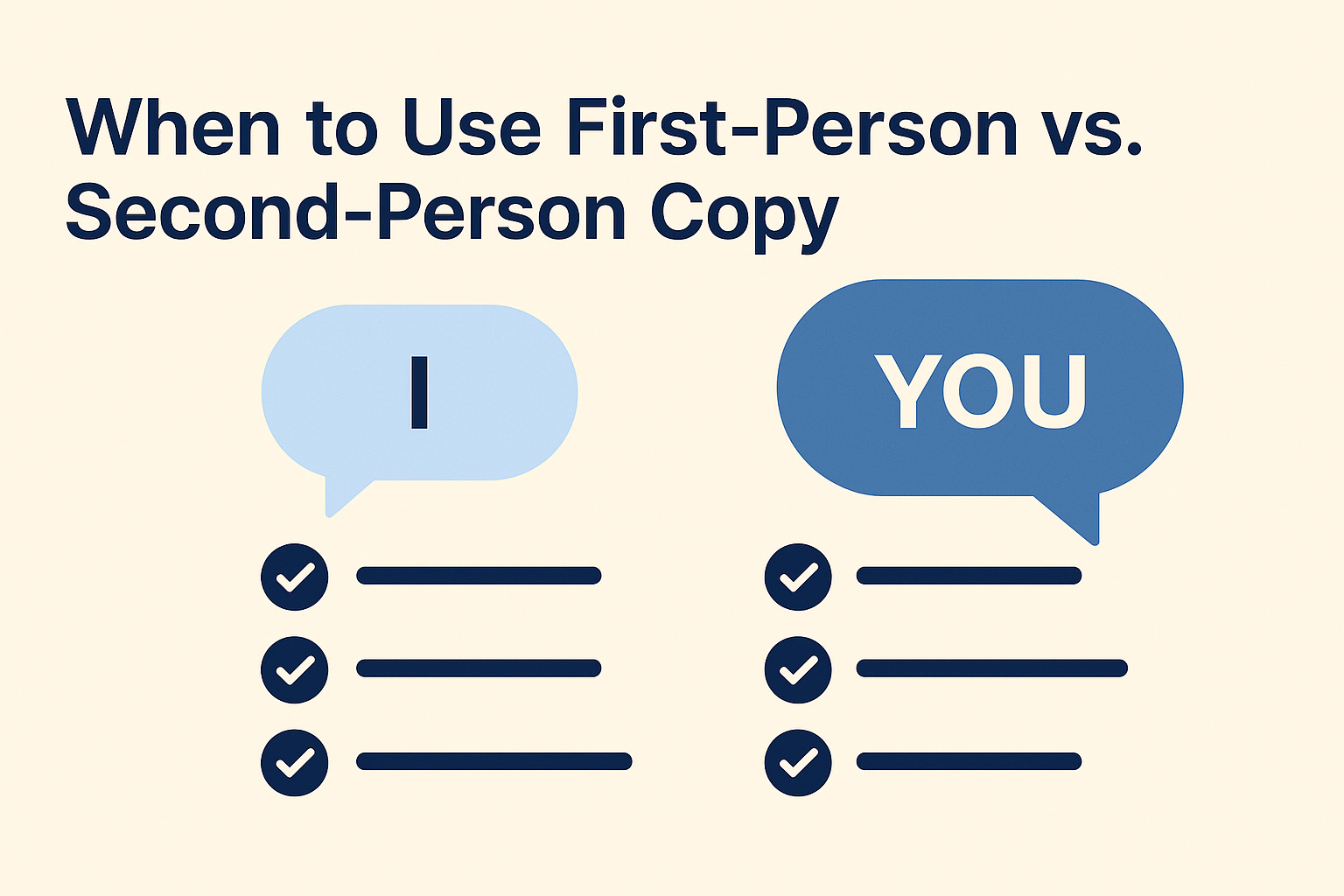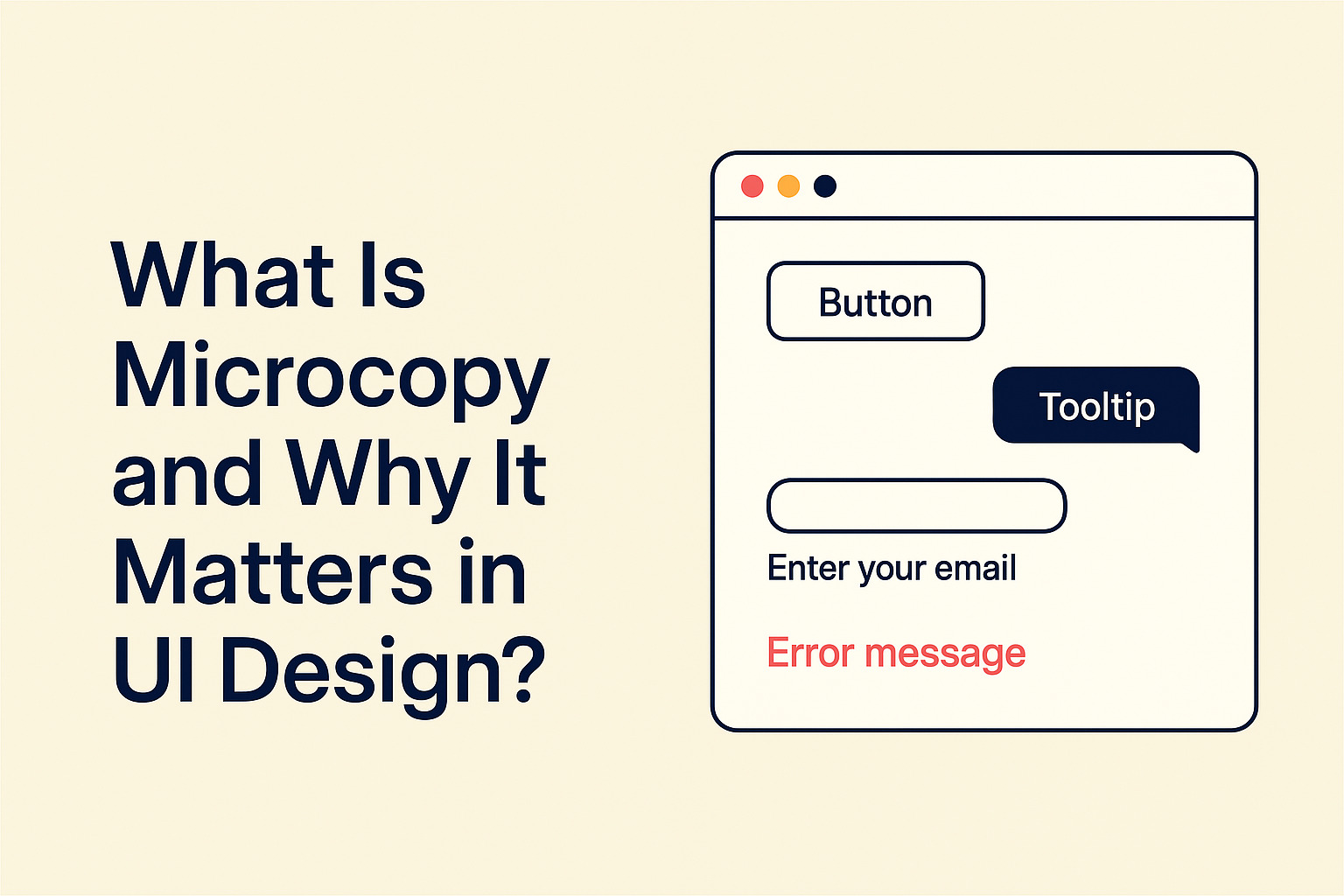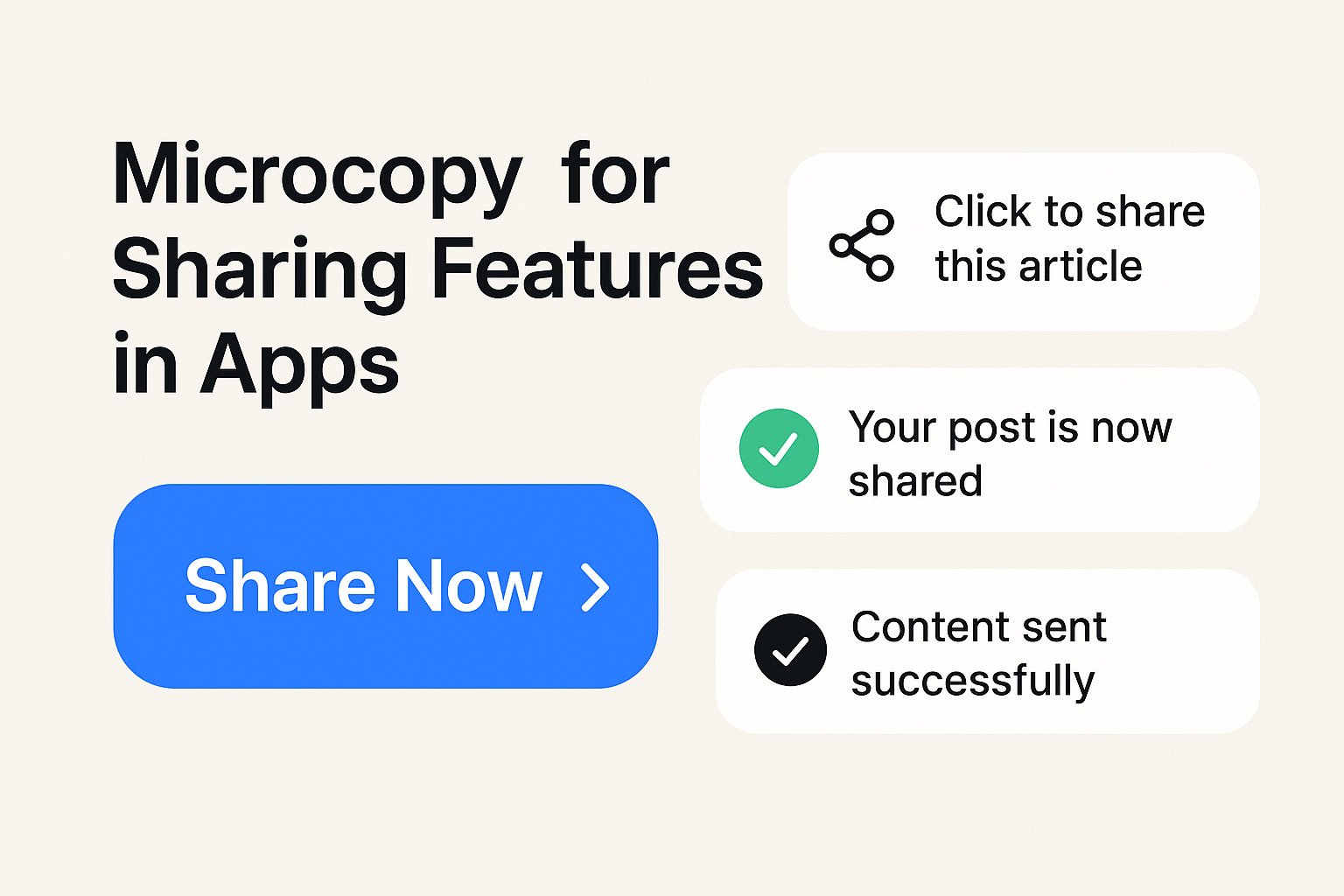The choice between first-person and second-person copy shapes the connection users feel with a digital interface. In this article, the answer lies in the type of experience you wish to offer. First-person copy makes the tone warm and personal, while second-person copy speaks directly to the user, fostering immediacy and involvement. Each style serves a unique purpose that depends on your design objectives and the context of the interaction.
Understanding First-Person Copy
First-person copy uses pronouns such as “I” and “we” to create an intimate voice that often represents a brand or persona. This approach works best when the goal is to build a friendly rapport or express shared values between the service and the user. For example:
- Personal Narratives: Use first-person copy when sharing a personal story or when the voice of a company leader is relevant.
- Team-Oriented Interactions: When representing a collective effort or a group mentality, phrases like “we’ve got your back” can instill a sense of unity.
- Reflecting Brand Identity: Brands that wish to project personality and warmth often choose first-person narratives to create a sense of familiarity and trust.
This style is particularly effective when the user is invited to feel part of a community. It can also soften the tone of technical instructions or service details by making them appear as a shared conversation.
Understanding Second-Person Copy
Second-person copy addresses the user directly with pronouns such as “you.” This method turns the focus squarely on the individual interacting with the interface. It creates clarity and encourages immediate action. Consider the following scenarios:
- Direct Calls to Action: Commands like “Start your free trial” or “Complete your profile” use second-person copy to speak directly to the user, reducing ambiguity.
- Instructional Content: When guiding a user through a process, addressing them directly can help eliminate confusion and make steps easier to follow.
- Personalization: This style can give users the feeling that the experience is tailored specifically for them, enhancing engagement and accountability.
Second-person copy is ideal when the aim is to provide clear guidance or when the goal is to prompt the user to perform an action. It can transform a set of instructions into a personal conversation, resulting in a more inviting and engaging interface.
When to Use Each Style
The decision of which voice to use depends on several factors. Consider these guidelines when designing your interface copy:
- User Intent:
- If you aim to make users feel part of a community or to express a friendly, conversational tone, opt for first-person copy.
- For situations where clarity and direct instructions are necessary, choose second-person copy.
- Task Complexity:
- Complex processes may benefit from second-person copy that breaks down actions into clear, manageable steps.
- More narrative-driven sections, such as welcome messages or brand stories, can use first-person copy to provide a comforting touch.
- Brand Personality:
- A brand with a casual, approachable personality might find first-person copy aligns better with its identity.
- A service that prides itself on efficiency and precision may prefer second-person copy to streamline communication.
- User Engagement:
- When the goal is to build a relationship or establish ongoing communication, first-person copy often generates warmth and familiarity.
- If the intent is to guide a user swiftly through a process, second-person copy offers the directness needed to keep the interaction focused and productive.
Practical Examples for UI Copy
- First-Person Copy in Onboarding:
Imagine a scenario where a new user is welcomed to an app. A message like “I’m excited to show you around” adds a personal touch that can ease nerves and build confidence. This approach works well when the brand wants to position itself as a supportive partner in the user’s journey. - Second-Person Copy for Task Instructions:
In contrast, when a user is prompted to set up an account or change settings, clear instructions such as “Update your profile” or “Verify your email” leave little room for misinterpretation. This style is particularly effective when the task is straightforward and action-oriented.
Balancing the Two Approaches
A blended approach can sometimes provide the best outcome. For instance, an onboarding process might use first-person copy in a welcome message to create rapport, then switch to second-person copy for step-by-step instructions. The balance should be guided by the context of each interaction and the overall voice of your product.
- Listicle for Mixed Copy Usage:
- Welcome Screen: A warm greeting in first-person copy sets a friendly tone.
- Feature Explanation: Use a mix by narrating benefits in first-person and instructions in second-person.
- Action Prompts: Always opt for second-person copy to clearly state the desired action.
When choosing the right style, consider your target audience and the scenario at hand. The deliberate selection between first-person and second-person copy not only affects the user experience but also influences the perceived reliability and accessibility of your interface.
By paying attention to these factors, you can create copy that is both engaging and functional. The voice of your copy should always be tailored to the immediate need of the interaction, ensuring that every word contributes meaningfully to the overall experience.




